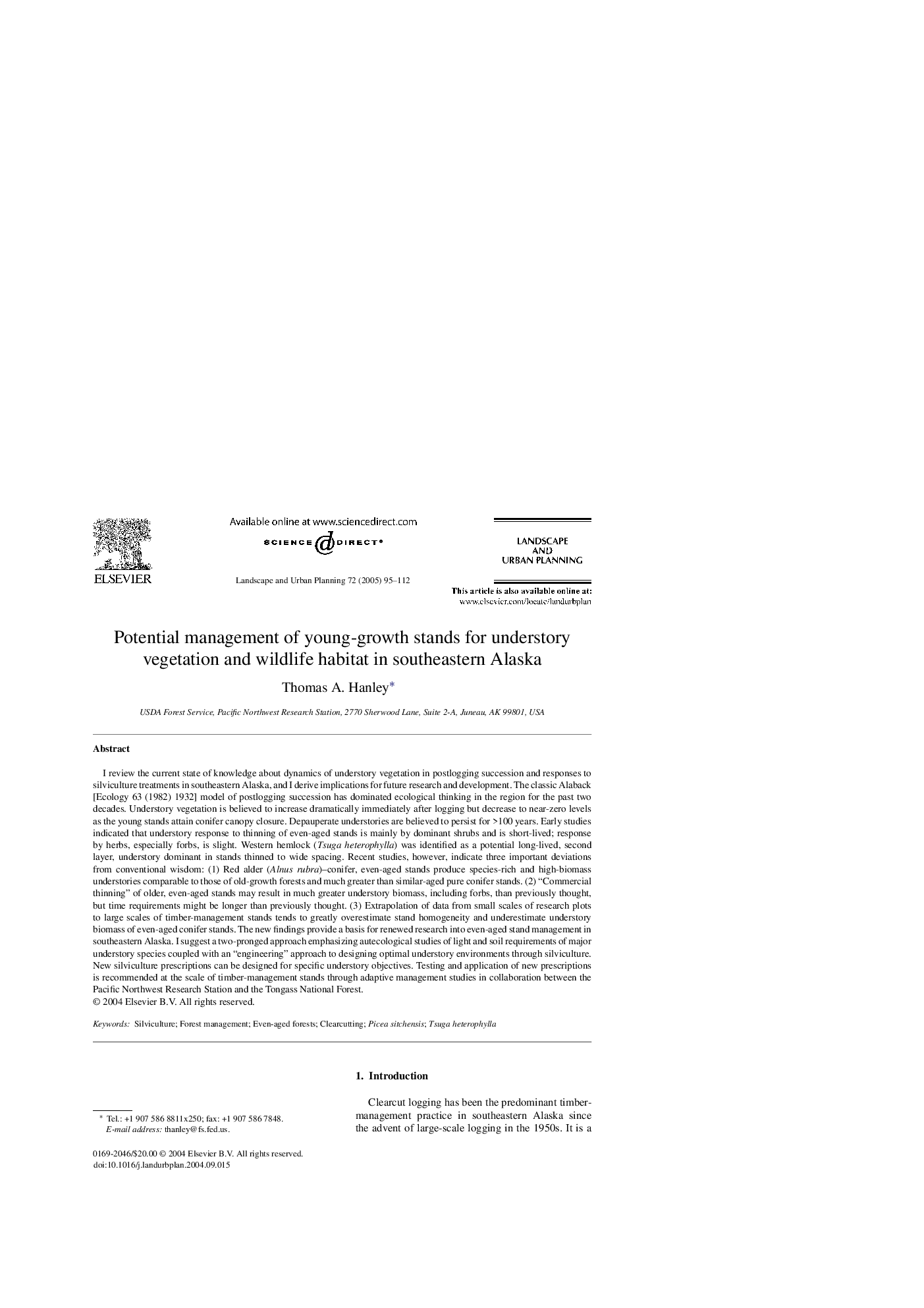| کد مقاله | کد نشریه | سال انتشار | مقاله انگلیسی | نسخه تمام متن |
|---|---|---|---|---|
| 9736076 | 1484682 | 2005 | 18 صفحه PDF | دانلود رایگان |
عنوان انگلیسی مقاله ISI
Potential management of young-growth stands for understory vegetation and wildlife habitat in southeastern Alaska
دانلود مقاله + سفارش ترجمه
دانلود مقاله ISI انگلیسی
رایگان برای ایرانیان
کلمات کلیدی
موضوعات مرتبط
علوم زیستی و بیوفناوری
علوم کشاورزی و بیولوژیک
بوم شناسی، تکامل، رفتار و سامانه شناسی
پیش نمایش صفحه اول مقاله

چکیده انگلیسی
I review the current state of knowledge about dynamics of understory vegetation in postlogging succession and responses to silviculture treatments in southeastern Alaska, and I derive implications for future research and development. The classic Alaback [Ecology 63 (1982) 1932] model of postlogging succession has dominated ecological thinking in the region for the past two decades. Understory vegetation is believed to increase dramatically immediately after logging but decrease to near-zero levels as the young stands attain conifer canopy closure. Depauperate understories are believed to persist for >100 years. Early studies indicated that understory response to thinning of even-aged stands is mainly by dominant shrubs and is short-lived; response by herbs, especially forbs, is slight. Western hemlock (Tsuga heterophylla) was identified as a potential long-lived, second layer, understory dominant in stands thinned to wide spacing. Recent studies, however, indicate three important deviations from conventional wisdom: (1) Red alder (Alnus rubra)-conifer, even-aged stands produce species-rich and high-biomass understories comparable to those of old-growth forests and much greater than similar-aged pure conifer stands. (2) “Commercial thinning” of older, even-aged stands may result in much greater understory biomass, including forbs, than previously thought, but time requirements might be longer than previously thought. (3) Extrapolation of data from small scales of research plots to large scales of timber-management stands tends to greatly overestimate stand homogeneity and underestimate understory biomass of even-aged conifer stands. The new findings provide a basis for renewed research into even-aged stand management in southeastern Alaska. I suggest a two-pronged approach emphasizing autecological studies of light and soil requirements of major understory species coupled with an “engineering” approach to designing optimal understory environments through silviculture. New silviculture prescriptions can be designed for specific understory objectives. Testing and application of new prescriptions is recommended at the scale of timber-management stands through adaptive management studies in collaboration between the Pacific Northwest Research Station and the Tongass National Forest.
ناشر
Database: Elsevier - ScienceDirect (ساینس دایرکت)
Journal: Landscape and Urban Planning - Volume 72, Issues 1â3, 30 April 2005, Pages 95-112
Journal: Landscape and Urban Planning - Volume 72, Issues 1â3, 30 April 2005, Pages 95-112
نویسندگان
Thomas A. Hanley,